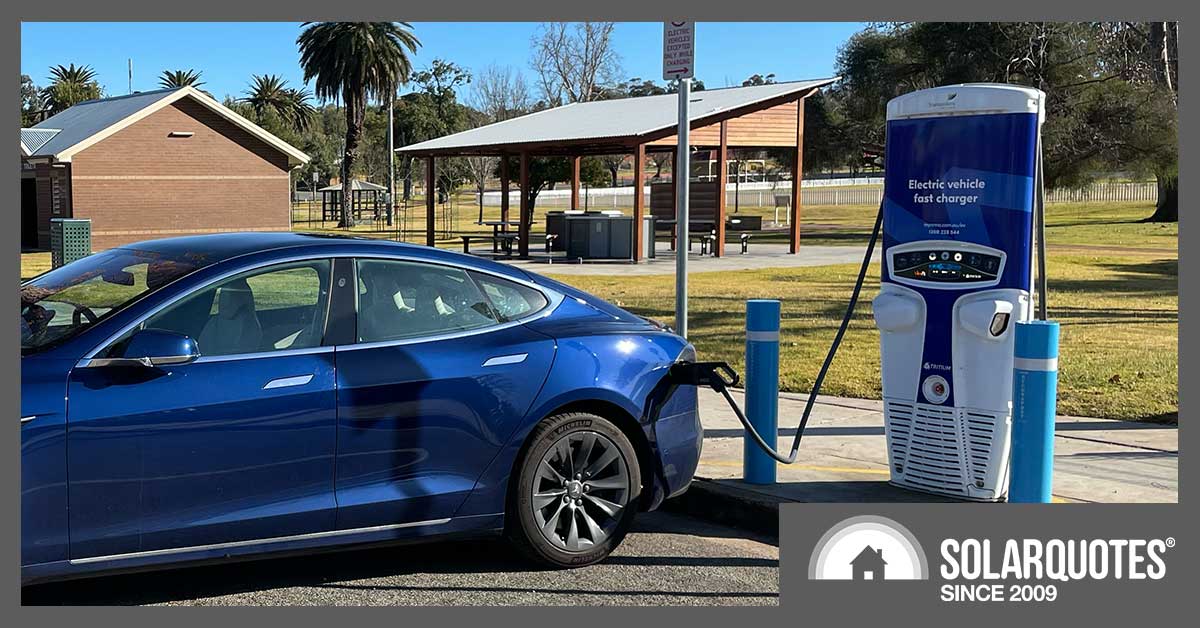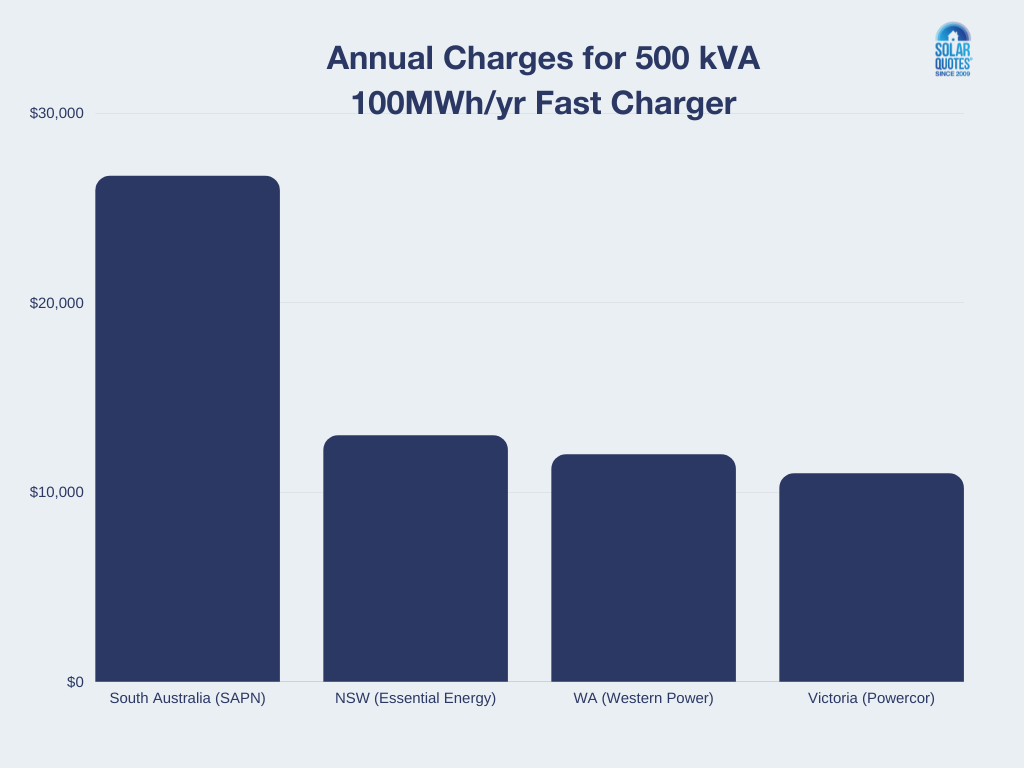
The Electric Vehicle Council (EVC) is once again opposing a distributed network service provider’s tariff plans on the basis that it discourages high-power EV charging.
Back in May, the EVC took exception to Ausgrid’s 2024-2029 regulatory proposal. This time, it’s taking aim at SA’s local electricity network, SA Power Networks (SAPN).
In its submission to SAPN (PDF), the Electric Vehicle Council frets explicitly about the future of higher-power business connections:
“The draft proposal from SAPN identifies in section 6.2.3 of Part B that the status quo, whereby all business connections >120kVA attract demand or capacity charges, will remain in place.”
The council said this represents “the least supportive tariff arrangements in the country for high power public EV charging”.
If the EV Council’s analysis is correct, the different tariffs it analyses would impose these charges for a 500kVA charging location (that is, four charging bays delivering 100MWh per annum):
- SAPN (South Australia): around $14,000 in capacity charges; around $12,700 for energy use;
- Powercor (Victoria): no kVA-based charges; around $11,000 for energy use;
- Essential Energy (New South Wales): no kVA-based charges; around $13,000 for energy use;
- Western Power (Western Australia): no kVA-based charges; around $12,000 for energy use.
The EV Council’s point is that in other jurisdictions, all small business customers – not just EV chargers – can opt out of the kVA component, and that this should exist for South Australia too.
The council suggests SAPN “align with the rest of the country on a volumetric level of 160kVA, and let business customers opt out of volumetric charges below that.” The EVC noted consumers have this option if they’re above 120kVA but consuming less than 160MWh per annum; and only 446 such consumers exist.
Home EV Charging: Tariffs And V2G
The EV Council submission also pushed back against SAPN’s proposal to spend $15 million preparing its network to apply orchestration to home EV chargers – in other words, to give the network some control over when people use the devices.
The council said it believes this would cost more than SAPN could hope to recover from the measure, and that the network should instead concentrate on incentives rather than automation:
“The economically sensible move is to encourage well behaved charging with appropriate pricing structures, educate the consumers, and leave them in control.”
EVC also believes that SAPN should consider time-of-use tariffs not only for electricity consumption, but for feed-in tariffs as well, where, the submission said, the customer can vary the time at which they export because they have vehicle-to-grid (V2G) capability (or a stationary battery).
The Electric Vehicle Council’s submission said to encourage V2G participation, the tariff structure should “offer the high feed-in tariff to the network between 5pm and 9pm, without linking it to a significant penalty for consumption from the grid during those hours.”


 RSS - Posts
RSS - Posts



You should ask them what costs to provide the service they are factoring in to develop these charges. One normal pad mount transformer is 500kva. Add the HV upgrade to feed multiple trannies by a private contractor then argue the point.
You shouldn’t expect a free ride from those who can’t afford an EV.
This seems like the EVC wanting a free lunch. 500kVA is a huge site. That would normally be high voltage at at least 11kV and they want to have that for small customer rates??
Isn’t this simply the EV council opposing user pays and preferring cheaper options for EV users?
Similarly, isn’t the EV Council’s opposition to SAPN basically the opposite of aircon treatment? Electricity companies want the ability to switch off home aircon, despite this being a life saving necessity for some. Recharging your car when you want is nice, but is it actually a necessity?
Perhaps I’m misreading this, but to me it looks like the EV Council don’t want to pay their fair share, but do want special privileges. Am I overlooking something, or is it simply a matter of perspective?
The way I’m reading it is they are saying to SA instead of looking at ways to penalise people for EV use look at ways EVs can help the network via V2G.
Bingo. 100% correct.
If your behaviour adds to societal cost you should pay for it. Whether that be carbond charging or high power EV charging.
Hmm,
I’ve fully electrified, with the singular exception of a stationary battery. I looked pretty closely at the economic, carbon and functional benefits of each element. Overall, I got a 50% reduction in costs (more in bills) and 70% reduction in carbon emissions. Net economic and carbon benefits of the stationary battery are both negative and the only functional benefit is presently power backup.
It made me very aware of the LCOS of batteries which needs to be somewhere in the range 15c-20c/kWh to deliver a worthwhile benefit. Stationary batteries like the Tesla powerwall are something like 30-35c/kWh installed.
I can’t imagine vehicle batteries are cheaper than this, so V2G is looking like an economic con-job to me: one where grid companies exploit consumer ignorance to avoid capital expenditure by parasitically under paying for the use of the consumers’. If forced to pay fair V2G costs, the grid would find it cheaper to pay for big stationary batteries and EV owners would maintain the range of their vehicles for longer.
Of course it’s not impossible that major battery breakthroughs could rebalance these economics, but bear in mind that stationary storage LCOS without the power and energy density constraints of mobile is projected to be 3-10 times cheaper than current lithium chemistries (See Ambri, Form).
The SA proposal actually makes perfect sense. The grid is sized to meet maximum load. Increasing dramatically the maximum load of the grid should come with a big cost.
Fact is we should be encouraging workplace and home based trickle charging off solar. Not routine high power charging networks.
I’m a bit confused by the article. Shouldn’t there be a cents/kWh somewhere that the vendors and motorist pay?